Create a model based on a profile
Overview
Next Design allows you to intuitively create models of various representation formats used in software development.
Let's create a use case model in the following steps.
- Create a new project
- Add a use case model
- Create actors and use cases and edit the description
Image of the model to be created
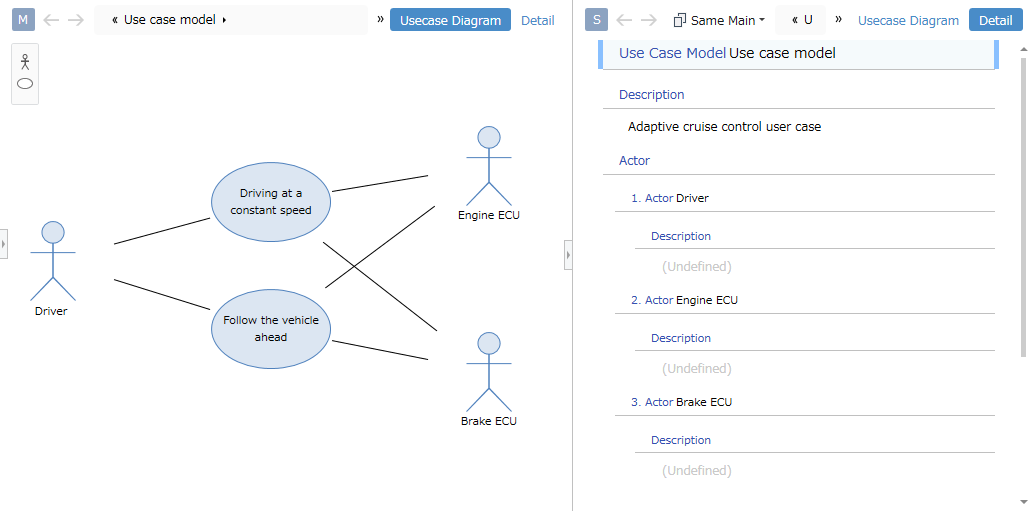
Preparations
Understanding the screen configuration
The user interface of Next Design is divided into the top, left, and right sides, with the editing area in the center.
There is a ribbon that displays menus and commands at the top, a navigator with a tree structure like an explorer on the left, the main editing area in the center, and a sub-editing area, which is a feature of Next Design, on the right.
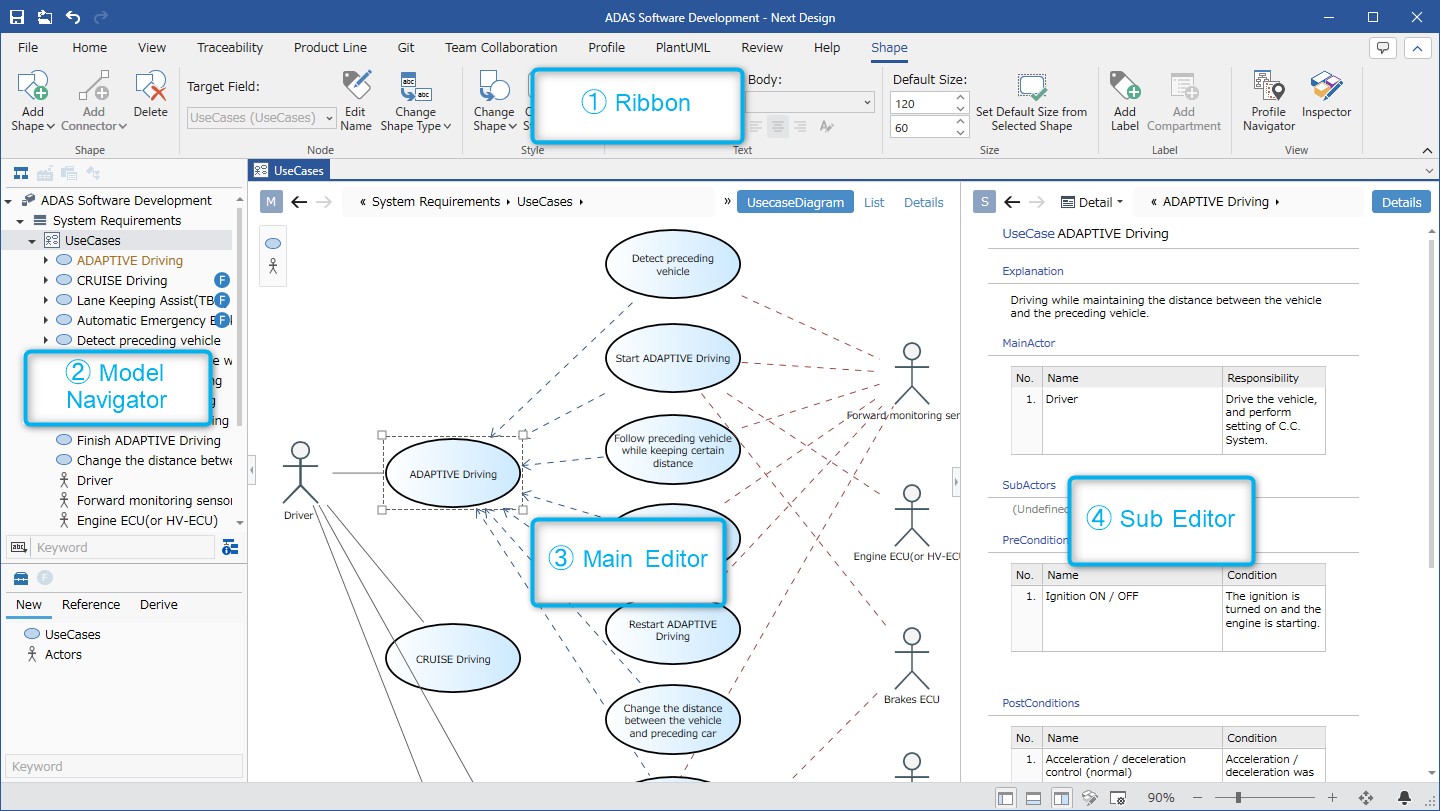
| Area | Main uses |
|---|---|
| (1) Ribbon | Displays menus used for editing operations. You can switch between them using the tabs at the top of the ribbon. |
| (2) Model Navigator | Displays the model structure being edited in a tree. You can switch the navigator depending on the purpose using the selector at the top. |
| (3) Main Editor | You can edit the model selected in the Navigator. You can switch the model display format using the button at the top right. |
| (4) Sub Editor | You can edit related models side by side in a two-screen display. |
Download
Download the zip file containing the sample profile from the following link and unzip it.
Download link: quickstart.zip
Create a new project
When creating a new project, you need to specify a profile according to the design target.
Here, create a new project using the following sample profile.
Profile to use: Quick Start/Modeling/Profile Definition Sample.iprof
Start Next Design and create a new project from the start page by following the steps below.
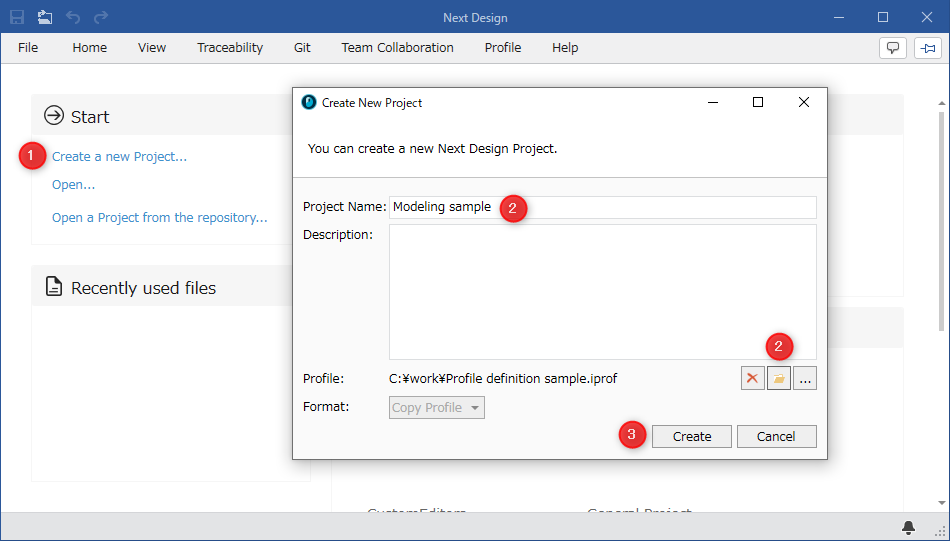
- Click the [Start] > [Create New Project] link to display the [Create New Project] dialog.
- Enter [Project Name], click the [Folder] button for [Profile], and specify the profile (.iprof file) to be used.
- Click the [Create] button to create a new project.
Add a Use Case Model
Immediately after creating a new project in Next Design, only the project is displayed at the top of the Model Navigator. To start editing a model, you need to add a model to be edited under the project.
Here, add the following [Use Case Model] to the newly created project as the model to be edited.
Model to be edited: [Modeling Sample] > [Requirement Model] > [Use Case Model]
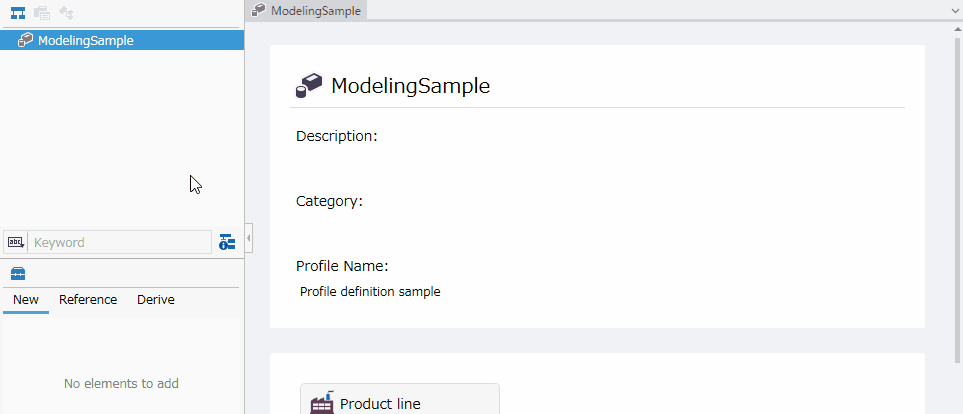
- Right-click the project displayed at the top of the Model Navigator, and click [Add Model] > [Requirement Model] from the context menu to add the first level model.
- Right-click the added [Requirement Model], and click [Add Model] > [Use Case Model] from the context menu to add the model to be edited.
- When you add a model in the Model Navigator, the model is displayed in the main editor and can be edited.
Creating and editing actors and use cases
Next Design allows you to directly edit the same model while viewing it in various representation formats.
For example, when you start modeling, you can edit the model in a diagram format that shows the model in a diagram, so you can model while understanding the overall structure of the model.
You can then switch to a form format that shows the model in a list or document to add details about the model.
1. Adding actors and use cases
To add model components to a diagram, follow these steps:
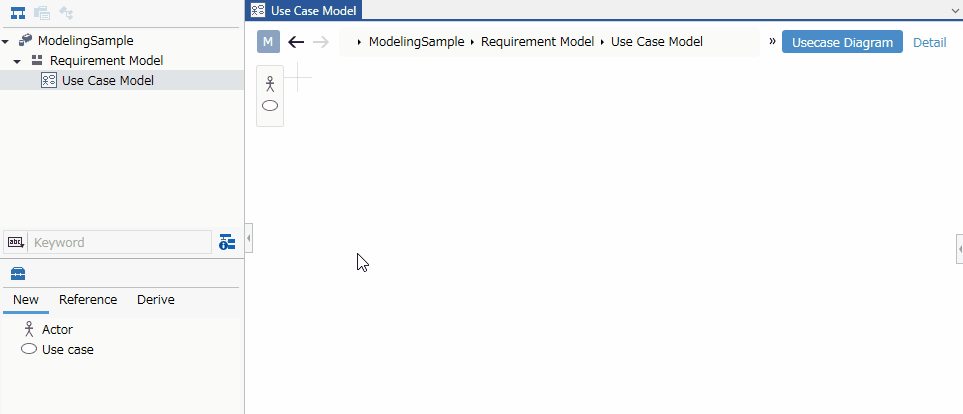
- Select the type of model you want to add from the toolbox under the model navigator and drag and drop it onto the diagram.
- You can also drag and drop from the sub-toolbox on the left side of the editor editing area.
When entering the name of a model, do one of the following:
- Start typing while the model is selected
- Double-click the model
- Select the model and press the f2 key
2. Associate an actor with a use case
To associate model components in a diagram, follow these steps:
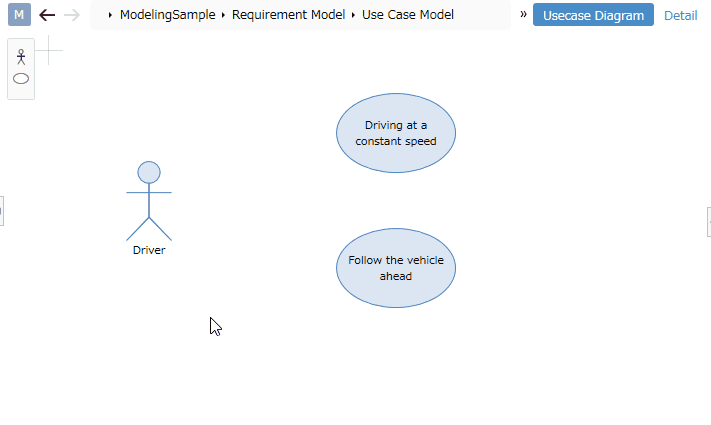
- Move the pointer over the model component.
- Drag the [▲] icon displayed in all four directions and drop it on the model you want to associate.
- If there are multiple types of associations, a pop-up will appear with options after dropping, so click to select.
- Associations cannot be added between models that do not allow associations.
- The possibility of association is determined by the type of model to be associated.
3. Editing actor and use case details
To switch the model representation format and edit the model details, follow the steps below.
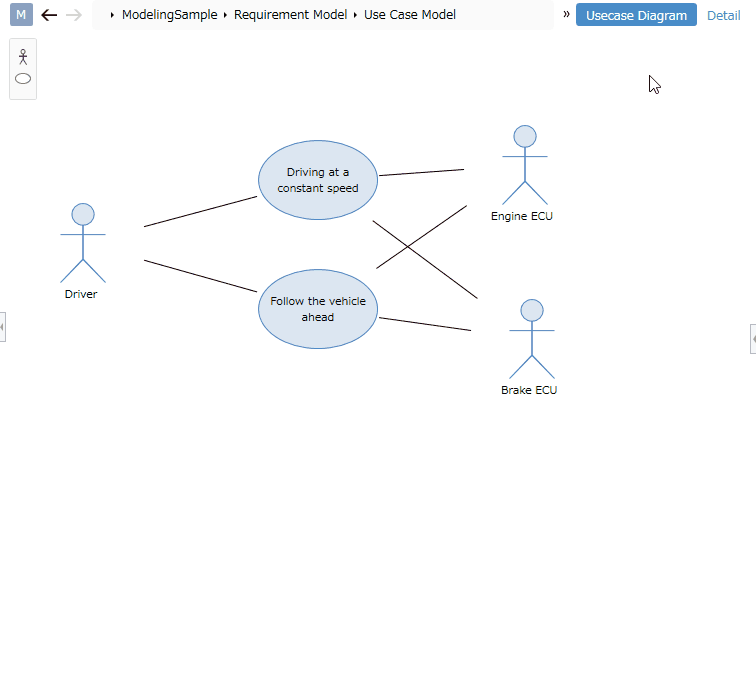
- Click the view option displayed in the upper right of the editing area to switch views. (In the above example, there are two views: [Usecase Diagram] and [Detail].)
- Switch to the [Detail] view from the view options and enter information in the form-format view.
- To edit text such as the description, do one of the following, just like entering a name in a diagram.
- Start typing with the input field selected
- Double-click the input field
- Select the input field and press the f2 key
- To create a line break in the middle of text, enter shift+enter.
- The views that can be switched vary depending on the entity.